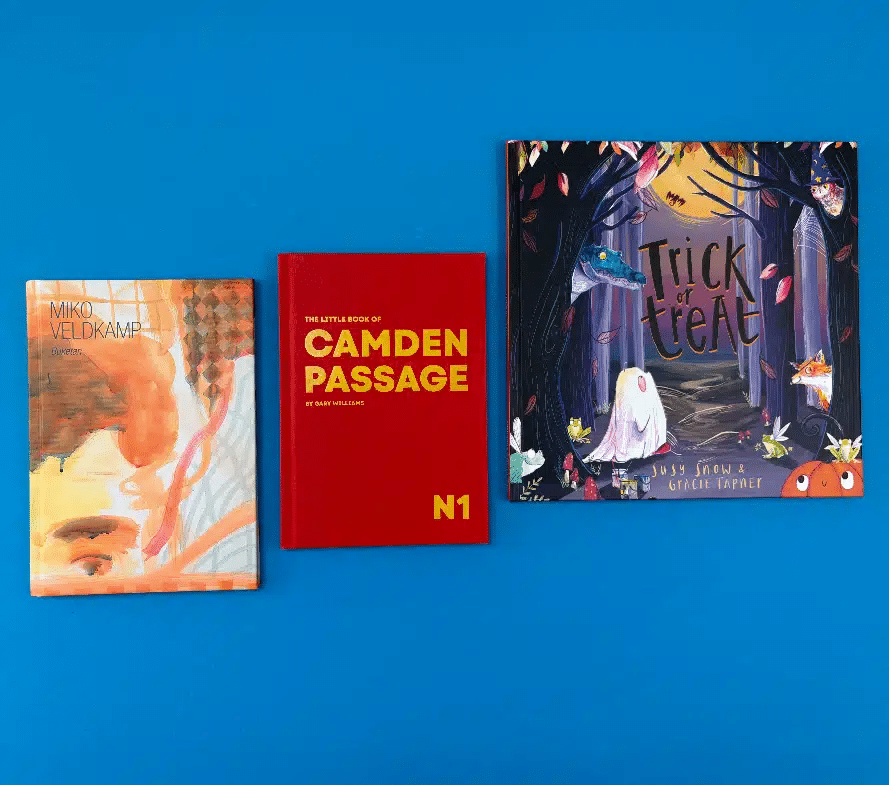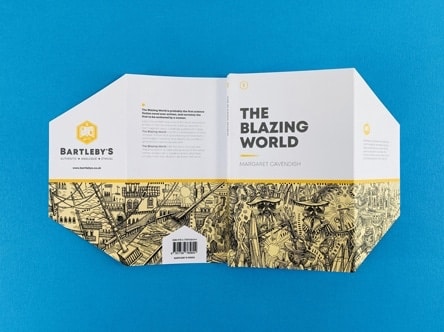How to Print a Novel: Step-by-Step for First-Time Authors


Printing your novel for the first time is a huge accomplishment. Whether you want to hold your story in your hands, gift it to friends, or distribute it for sale, seeing your words in print is incredibly rewarding. But if you’re a first-time author, it can be difficult to know where to begin.
Fortunately, you don’t need a publishing contract or a warehouse full of books to print your novel. With creative printing specialists like Ex Why Zed, the process is more accessible, flexible, and high-quality than ever. In this guide, you’ll learn exactly how to print a novel from start to finish, complete with formatting tips, design advice, and step-by-step instructions tailored for beginners. Let’s get started!
Steps to Print Your Novel from Draft to Book
Whether you're self-publishing or printing a single copy for personal use, follow these steps to ensure your book looks clean, professional, and ready for readers:
Step 1: Finalize your manuscript
Before you even think about printing, your manuscript needs to be polished and complete. That means:
- Proofread thoroughly: Correct all typos, grammar issues, and inconsistencies. Consider hiring a professional editor for developmental or copyediting help.
- Format your text for print: Use consistent font styles, paragraph spacing, and chapter breaks. Times New Roman or Garamond at 11–12 pt size is standard.
- Convert to PDF: Most printers require a PDF to preserve formatting across devices. Always embed fonts and check that page breaks appear where they should.
Step 2: Choose the right book size and layout
The size and layout of your book play a huge role in how it looks and feels. Common trim sizes for novels include:
- 5” x 8” – ideal for smaller novels or pocket-sized books
- 6” x 9” – standard for fiction and nonfiction
- 5.5” x 8.5” – a balanced middle ground
You’ll also need to set the right margins and line spacing. Interior formatting tools can make this easy, especially if you're new to layout design. These services are also offered at affordable costs.
Make sure you:
- Use mirrored margins for printed books (inside margins are slightly wider for binding).
- Justify the text for a clean, professional appearance.
- Insert page numbers and a table of contents if needed.
Step 3: Design a compelling book cover

Your cover is the first impression your book makes, and for printed novels, it needs to meet technical specs. A print-ready cover includes:
- Front cover (the face of your book must includes title, author name, and eye-catching design)
- Spine (calculated based on page count and paper type)
- Back cover (with optional blurb, barcode, and author bio)
You can use free tools like Canva or professional software like Adobe InDesign to design your cover.
Design tips:
- Use 300 DPI resolution images for print.
- Work in CMYK color mode, not RGB.
- Add bleed to your design, usually 0.125” on each edge, to ensure colors extend to the edge when trimmed.
If you're new to design or want a polished, industry-standard look, we offer expert book cover design support. Our creative team produces stunning, print-ready covers tailored to your book’s tone, genre, and personality.
From proper formatting to premium finishing touches, we ensure your cover is not only visually striking but fully optimized for professional printing.
Step 4: Choose the right paper type for your novel
Paper quality directly impacts how your finished novel looks, feels, and holds up over time. The right choice depends on your book’s genre, printing goals, and reader experience.
For most standard books, white or cream uncoated paper works well for the interior. Cream offers a soft, classic look that’s easy on the eyes, making it perfect for fiction. White pages, on the other hand, give a sharper contrast and are often preferred for nonfiction or books with visual elements.
If your book is photo-heavy or illustrated, go for matte or glossy coated paper to enhance image clarity and color vibrancy. As for interior paper weight, standard paperback books typically use 50–70 lb. (75–105gsm) stock. For a more premium or durable feel, consider heavier weights like 100–170gsm.
When printing with Ex Why Zed, you’ll have access to a range of high-quality paper option,s including House Uncoated, Silk, Gloss, and Evolution Uncoated. We offer paper weights ranging from 100gsm to 350gsm, ideal for creating a professional finish. Interior pages typically use up to 170gsm, while covers can go up to 350gsm. However, we generally recommend a maximum of 300gsm for covers to ensure the perfect balance of durability and flexibility.
Not sure which paper to choose for your novel? Read our blog on choosing the right book printing paper types for a detailed breakdown.
Step 5: Select a printing method
Once your manuscript and cover are ready, the next step is choosing how you want to bring your novel into the real world. The best printing method depends on your goals, whether you're creating a small batch for personal use, preparing for a book launch, or producing high-quality copies to sell.
Here are the main options:
1. Print with Ex Why Zed
If you're looking for professional results, personalized support, and a range of customization options, Ex Why Zed is an ideal choice. Whether you're printing a single proof copy or a full run of novels, our expert team ensures exceptional quality and fast turnaround, without sacrificing the creative control you deserve.
- Pros: High-end print finishes, flexible order quantities, premium paper options, and one-on-one support from a knowledgeable team.
- Great for: Self-published authors, creative professionals, and anyone who wants their book to look and feel professionally produced.
2. Print-on-demand services
Services like Amazon KDP print each book only when an order is placed, making them a popular print-on-demand (POD) option. They’re convenient for authors who don’t want to handle inventory or upfront costs.
- Pros: No storage required, hands-off fulfillment, and scalable production.
- Considerations: Less control over materials and print quality; limited personalization.
3. Offset printing for large runs
Offset printing is a traditional method used for high-volume book production. It’s ideal for authors planning bulk orders for retail distribution, events, or direct sales.
- Pros: Lower cost per unit for large print runs, consistent color quality, and professional-grade output.
- Considerations: Higher upfront costs, longer lead times, and typically requires minimum order quantities.
Step 6: Decide if you need an ISBN
If you plan to sell your novel, whether online, in bookstores, or through booksellers and distributors, you’ll need an ISBN (International Standard Book Number). This 13-digit identifier helps retailers track and catalog your book, and it's a key part of professional publishing.
Some print-on-demand platforms, such as Amazon KDP, offer free ISBNs, but these typically list the platform as the publisher, which may limit your publishing control or options in the future.
If you want to retain full ownership and be listed as the publisher of record, it’s best to purchase your own ISBN. After securing one, you can easily generate a scannable barcode using a free online tool and add it to the back cover of your book during the design stage.
Note: If you're printing your novel for personal use, gifts, or small private runs, an ISBN isn’t required.
Step 7: Order your copies
With your proof approved, it’s time to bring your novel to life in print. Whether you're printing a few copies for personal use or preparing for a full book launch, this step ensures your story is ready to share.
- Choose your quantity: Print-on-demand works for single copies, but if you're planning a larger release, bulk printing with Ex Why Zed offers better value and more control over quality of the book printing process.
- Confirm your finish: Finalize details like matte finish or gloss cover finish and any custom touches that elevate your book’s appearance.
- Plan delivery: Ex Why Zed provides fast turnaround and secure packaging, with optional fulfillment help if you need it.
Step 8: Print and distribute your novel!
With your files approved and copies ordered, it’s time to share your book with the world. Whether you're selling online, hosting a book launch on social media, or gifting copies, this is the moment your novel becomes a published reality.
Ex Why Zed makes distribution simple, with high-quality printing, secure packaging, and support for bulk orders or repeat runs. From local events to online sales, you're ready to get your story into readers’ hands, beautifully printed and professionally finished.
Why First-Time Authors Trust Ex Why Zed?
Ready to see your novel in print? At Ex Why Zed, we specialize in turning manuscripts into beautifully printed books, without the overwhelm. From stunning covers and premium paper to expert support and fast turnarounds, we make the book printing process smooth from start to finish.
Whether you're printing a single proof or a full run for retail, our team is here to guide you every step of the way. With flexible order sizes, bookstore-quality results, and a real human on the other end of every email, you can print your novel with confidence.
Start your printing journey with Ex Why Zed today, and bring your story to life exactly the way you imagined. Get your quote today!
Final thoughts
Printing your novel is a milestone worth celebrating. From formatting to cover design and final copies, each step brings your story closer to reality.
Whether you’re publishing for sale or sharing with others, the process of book printing can be simple and rewarding with the right support. Ex Why Zed is here to guide you every step of the way, helping you print a book that looks just as good as it reads.
You’ve written the story, now let’s bring it to life in print.
Frequently Asked Questions
1. Can I print different types of books besides novels?
Yes! While this guide focuses on printing novels, many custom book printing services like Ex Why Zed also support printing memoirs, manuals, lookbooks, photo books, and more. Whether your project is fiction or nonfiction, there are options for books of all kinds.
2. How do I promote and sell my own book after printing?
Marketing is key. You can build an audience through social media, create your own website for direct sales, or explore online retail distribution channels to reach a wider readership. You can also bundle your print edition with an ebook version to increase visibility.
3. How long does it take to receive printed books?
Turnaround times vary by printer, book type, and order size. At Ex Why Zed, production usually begins on the first printing day after your proof is approved. Depending on quantity and finishes, the estimated production time typically ranges from 3 to 7 business days plus shipping.
4. What if my book has fewer pages than a typical novel?
Shorter books can still be printed professionally at competitive pricing. Just keep in mind that some standard print book formats may require a minimum number of pages to support features like spine text or perfect binding. Ex Why Zed can help you choose the best layout based on your content.
5. Can I print a novel in full color?
Yes, you can print a full color paperback or hardcover novel, though it's more commonly used for children's books, graphic novels, or visual-heavy content. Be aware that the cost of printing is generally higher for color interiors than black-and-white.

